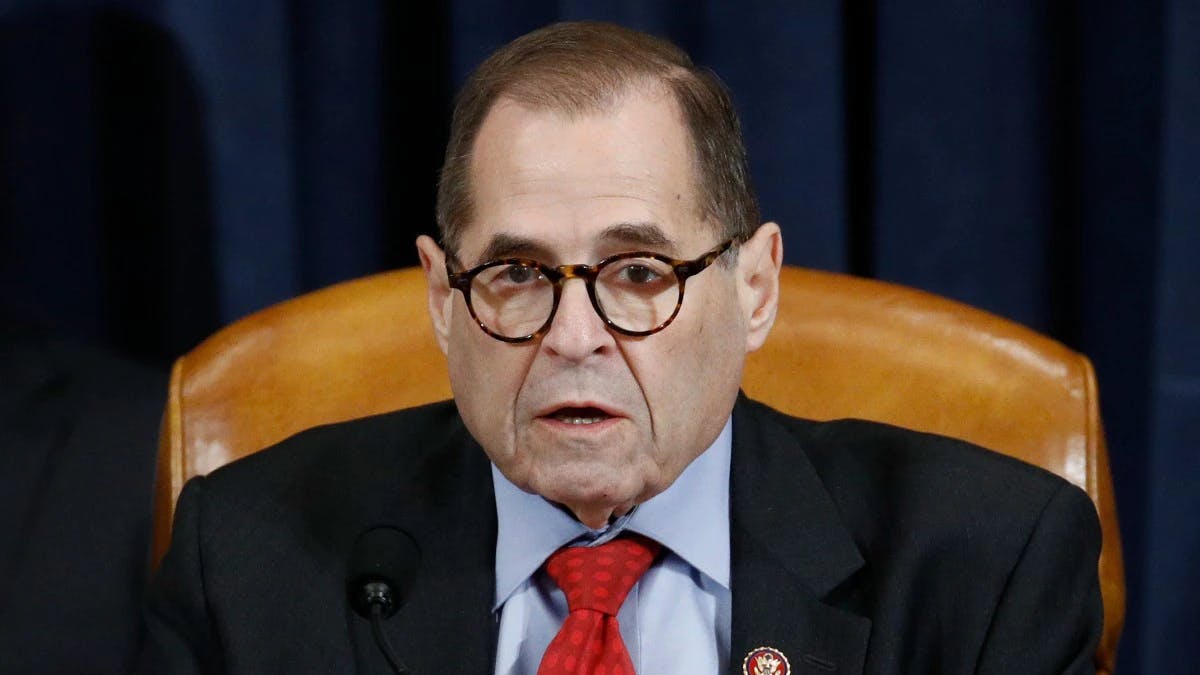A New York Congressman Wants the Treasury to Mint a $1 Trillion Coin to Pay off US Debt
The Treasury Secretary can mint a $1 trillion platinum coin to avoid defaulting on our debt.

Representative Jerry Nadler (D-NY)
- Representative Jerry Nadler suggested the US Treasury Secretary mint a $1 trillion coin in order to avoid the US defaulting on its debt for the first time in history
- The idea has been thrown out for decades, and it is perfectly legal
Yes, the United States government has the power to mint a $1 trillion platinum coin to pay off US Treasury Bills, and yes, there is at least one congressman on board.
Representative Jerry Nadler (D-NY) voiced the idea on Tuesday during a House Democratic caucus meeting, according to Speaker of the House Nancy Pelosi.
“Jerry Nadler wants to have a coin, a trillion dollar coin,” she told reporters Tuesday. “That doesn’t even require a congressional act.”
The idea appears to be legally sound under a vague provision of the Coinage Act of 1792, more commonly known as the Mint Act, that authorizes the minting of platinum coins for any amount to be used to finance public debt.
Pelosi is correct, congressional approval is not required. The Treasury Secretary has the authority to “mint and issue coins…in amounts the Secretary decides are necessary to meet the needs of the United States,” according to a 1982 amendment to the Coinage Act.
“On one hand, minting what is ultimately a meme coin to work around national debt limits shows how arbitrary the fiat currency system is in the first place, and wouldn’t have a major quantitative effect on anything, if performed once,” said Lyn Alden, founder of Lyn Alden Investment Strategies. “On the other hand, going that route can really spook the market by setting a bad precedent, because it basically goes around the intended checks and balances that keep some fiat systems more reliable than ‘banana republic’ fiat systems.”
Under US law, the Treasury can issue bonds to pay its obligations, but Congress is required for authorization on spending and taxes. The Federal Reserve is supposed to be independent of both the executive and the legislative branches, choosing what assets they will buy or sell within their mandate, Alden said.
“The Treasury (executive branch) going around Congress (legislative branch) and the spirit of the law by minting a coin in a loophole, and then encouraging/forcing the Fed to swap for it (i.e. going around the concept of central bank independence to support the Treasury market), basically shows that the Treasury can spend without taxing or issuing debt, and can therefore outright print money,” Alden said.
“Of course that’s essentially what is happening anyway, but it still needs to be rubber-stamped by a few supposedly separate entities, whereas this approach breaks that illusion of checks, balances, and independence.”
It is not the first time that the idea has been floated. Talks of minting a platinum coin swirled during President Obama’s tenure when a similar debt ceiling crisis was faced. He later described the crisis as one of the scariest points of his presidency and the idea of minting a coin seemed absurd to him.
“It was some primitive … it was out of the Stone Age,” President Obama said during an interview on the “Pod Save America” podcast in 2017. “I pictured rolling in some coin.”
As for logistics, the US government could, in theory, deem a coin of any size worth $1 trillion. President Obama admitted that when he pictured the coin, it was quite large.
It is also a common misconception that the coin of such a value would require copious amounts of platinum. In reality, the value of coins minted by the US Treasury is determined by legal tender, not material value.
The coin, if created and sold, would become the property of the Fed. It would likely be kept with other physical assets in the vault in the basement of the Fed Bank of New York in Manhattan.
Are you a UK or EU reader that can’t get enough investor-focused content on digital assets? Join us in London on November 15th and 16th for the Digital Asset Summit (DAS) London. Use code ARTICLE for £75 off your ticket. Buy it now.






